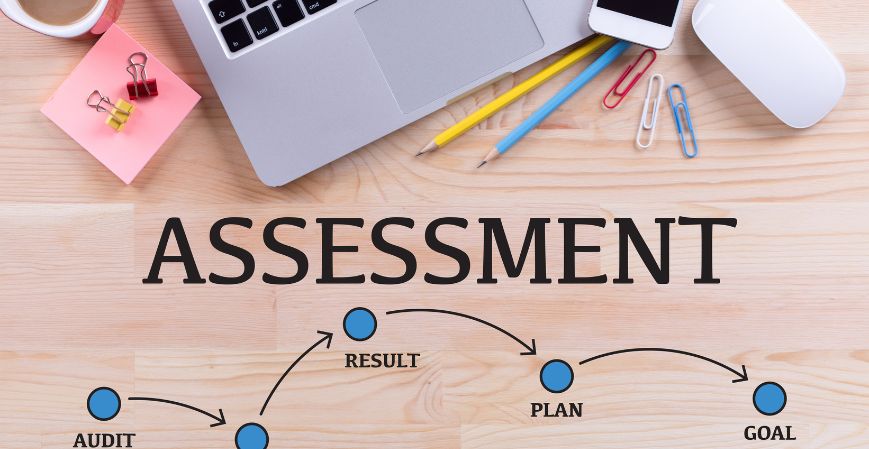Assessment tools are fundamental to the effective delivery of vocational education and training (VET) within Registered Training Organizations (RTOs). These tools help ensure that learners meet the required industry standards and achieve the competencies outlined in their qualifications. Developing robust and reliable assessment tools is crucial for maintaining the quality and credibility of the training programs. Here’s a step-by-step guide to building effective assessment tools for your RTO.
Step 1: Understand the Training Package Requirements
Before creating assessment tools, it’s essential to thoroughly understand the training package and the units of competency associated with the qualification. This includes:
- Reviewing Training Packages: Obtain the latest version of the training package and carefully review the units of competency, elements, performance criteria, and assessment requirements.
- Identifying Key Competencies: Determine the specific competencies and performance criteria that need to be assessed. Each unit of competency will outline what learners need to be able to do, which will guide the development of your assessment tools.
Step 2: Define Assessment Objectives
Clearly define what you want to achieve with each assessment tool. Consider the following:
- Purpose of Assessment: Determine whether the assessment is formative (to provide feedback during the learning process) or summative (to judge overall competence at the end of a training program).
- Assessment Outcomes: Identify the expected outcomes for learners, including the skills, knowledge, and abilities they should demonstrate.
Step 3: Develop Assessment Tools
Based on the defined objectives, start developing your assessment tools. Here’s how:
Select Assessment Methods: Choose appropriate assessment methods such as written tests, practical demonstrations, projects, case studies, or simulations. The choice should align with the competencies being assessed.
Create Assessment Instruments:
- For Written Assessments: Develop clear, concise questions that assess knowledge and understanding. Use a variety of question types, such as multiple-choice, short answer, and essay questions.
- For Practical Assessments: Design tasks that replicate real-world scenarios where learners can demonstrate their skills. Provide clear instructions and criteria for successful completion.
- For Projects and Case Studies: Outline project requirements and evaluation criteria. Ensure that projects reflect industry practices and provide opportunities for learners to showcase their abilities.
- Develop Marking Criteria and Rubrics: Create detailed rubrics that outline the standards for each assessment task. Include specific criteria and levels of achievement to guide the evaluation process.
Step 4: Ensure Compliance with Standards
Compliance with industry standards and regulatory requirements is crucial:
- Follow Regulatory Guidelines: Ensure that assessment tools meet the requirements set by the Australian Skills Quality Authority (ASQA) and other relevant regulatory bodies.
- Adhere to Principles of Assessment: Ensure that your tools are valid, reliable, flexible, and fair. This means that assessments should accurately measure the competencies required, be consistent in their application, accommodate diverse learner needs, and be unbiased.
Step 5: Pilot and Review Assessment Tools
Before full implementation, pilot your assessment tools with a small group of learners or assessors:
- Conduct a Pilot Test: Use the assessment tools with a sample group to test their effectiveness and identify any issues.
- Collect Feedback: Gather feedback from both learners and assessors about the clarity, relevance, and difficulty of the assessments.
- Review and Revise: Based on feedback and pilot results, make necessary revisions to improve the assessment tools. Ensure they are accurate, fair, and aligned with the intended outcomes.
Step 6: Train Assessors
Effective implementation of assessment tools requires trained assessors:
- Provide Training: Train assessors on how to use the assessment tools, including understanding the criteria, applying rubrics, and providing constructive feedback.
- Ensure Consistency: Standardize assessment practices to ensure consistency and fairness in the evaluation process across different assessors and learners.
Step 7: Implement and Monitor
With tools finalized and assessors trained, implement the assessment process:
- Deploy Assessment Tools: Use the assessment tools in your training programs according to the established schedule and guidelines.
- Monitor Effectiveness: Continuously monitor the effectiveness of the assessment tools and processes. Look for patterns in learner performance and feedback to identify areas for improvement.
Step 8: Review and Update
Regular review and updating of assessment tools are vital to maintaining their relevance and effectiveness:
- Scheduled Reviews: Regularly review assessment tools in line with updates to training packages, industry standards, and feedback from learners and assessors.
- Incorporate Changes: Make necessary updates to assessment tools to reflect changes in industry practices, regulatory requirements, or feedback from users.
Conclusion
Building effective assessment tools is a critical aspect of delivering high-quality training within RTOs. By following these steps—understanding training package requirements, defining clear objectives, developing appropriate tools, ensuring compliance, piloting and reviewing, training assessors, and ongoing monitoring—you can create robust assessment tools that accurately measure learner competencies and support successful training outcomes. Regular review and updates will ensure that your assessment practices remain relevant and effective in meeting industry standards and learner needs.
About Us
We aim to provide only the best of resources to your RTO at competitive market rates. We are here to ensure that each resource is meticulously validated to guarantee top quality by our exceptional Subject Matter Experts and proofread by compliance experts. Our talent members are inclined towards developing only the top-quality VET Resources, RTO Training Resources, and other RTO materials for Certificate I up to the Graduate Diploma level, which are highly suitable for Australian qualifications.
Contact Us
Address – 13/19 Radnor Drive, Deer Park VIC 3023, Australia
Phone Number – 1800 959 958
Mail – info@vetresources.com.au
Website – https://vetresources.com.au/



